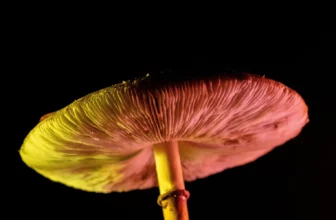
Freezing freshly harvested cannabis retains moisture, terpenes
As marijuana consumers develop a better understanding and appreciation for terpenes, flavonoids and other chemical compounds found in cannabis flower, live resin products are becoming increasingly popular.
Live resin can be used in many different products, but it mostly appears in vape cartridges, dabbable concentrates and edibles.
The best way to create live resin is from freshly harvested material that still contains moisture, according to Nic Robertson, vice president of operations in Massachusetts for Phoenix-based multistate operator 4Front Ventures.
Moisture is critical to live resin because it helps preserve terpenes, which are “incredibly volatile,” Robertson said. Even in the most optimal drying environments, a significant amount of terpenes will be lost.
But if plant material is frozen right after or soon after it’s harvested, its moisture will be preserved, thereby helping retain terpenes and other desirable chemical compounds.
“No matter what, we are going to lose some terpenes – even if under the most perfect drying conditions,” Robertson said.
“There’s never a higher concentration of terpenes in plant material than that day that you cut it down. If you could do anything to preserve that plant material as long as you can, and to be able to put it into something else, that’s obviously optimal.”
Freezing plant material within minutes after harvest can preserve terpenes and other compounds, resulting in highly flavorful vape cartridges and concentrates.
There are two ways to freeze cannabis.
One is so-called “flash freezing,” which is typically used by outdoor growers who must transport their product to processing facilities that are a couple of hours away or more.
In a flash-freezing scenario, plants are harvested and then put on a conveyor belt that takes them through a flash-freezing machine. They are immediately bagged and put into insulated freezer containers and driven to their destination.
This method also is used for frozen vegetables and frozen pizzas, Robertson said.
More typical among indoor grow facilities is so-called “fresh freezing.” In those cases, plant material is harvested, trimmed and broken down, bagged and then put into a freezer inside the facility, usually within 30 minutes of harvesting.
The harvesting process for fresh-frozen flower is similar to that for cured flower. Plants are cut and fan leaves are trimmed while sugar leaves are retained. Then, the flower is placed into freezer bags and carted to freezers within the facility.
“Once the plant is cut down, everything is about stabilization. You’re trying to get that stuff frozen and ‘live’ because that’s when you’re preserving all those monoterpenes,” said Marco Malatrasi, head cultivator at Fluent Flower in Florida.
“Live” is a term the industry has adopted for products made from fresh-frozen cannabis, such as live resin cartridge oils, concentrates and edibles infused with live resin oils.
The word “live” might make it seem as if the cannabis has living organisms as yogurt does, but it really means the flower has been harvested and frozen at peak terpene and resin levels.
In fact, everything else being equal, terpene and resin levels degrade as they go through the drying and curing process. If growers can capture peak terpene and resin levels by freezing flower and then extracting it later, they can get an arguably superior product.
Especially important is keeping “dwell time” – the period a plant spends between being cut and being frozen – to a minimum.
Reducing dwell time requires a strict process and harvesters with trimming expertise. “There is some processing involved; you don’t just throw a whole plant in the freezer. You’re getting these quarter-golf-ball-sized nuggets,” Malatrasi said.
For flash freezing, growers need a freezer environment and a process to feed the product into that room, Malatrasi said. “Time is the enemy when it comes to flash frozen.”
Cultivators advise staff not to overstuff the freezer bags because doing so can result in trichome loss.
Depending on the size of their cultivation facility, some growers will have chest freezers while others will have walk-in freezers.
Whatever the size, a home or restaurant freezer will likely not be cold enough. Instead, growers should invest in pharmaceutical-grade freezers or rig their own freezers to reach 40-70 degrees below Fahrenheit.
These better-quality freezers “will allow that material to freeze quick enough because the moisture doesn’t really have a great opportunity to separate (from the plant),” Robertson explained.
Story originally posted on MJBIZDAILY.COM





